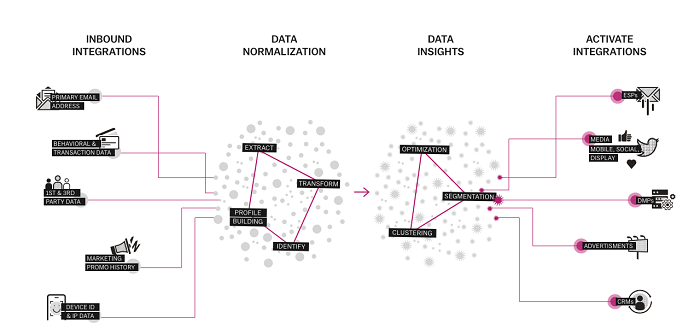What is a Customer Data Platform?
By: Alex Edholm, Senior Product Manager (Sydney)
CRMs are the basic foundation for all marketers to collect consumer data. But as marketing tactics have evolved, the number of marketing data management tools have vastly increased with CRMs, DMPs, ESPs, POS systems all collecting consumer data in their own siloed piece of the customer experience pie. Stitching all this data together in order to generate a full picture of the customer and their experience interacting with a brand requires special tooling.
Enter the Customer Data Platform (CDP).
CDPs help marketers activate consumer data across a unified platform. Walkthrough our step-by-step demo to see this in action:
With a CDP in place, the relevant data from marketing analytics, point of sale, and CRM systems will already be loaded in the platform and available for segmentation. Creating lists of customers that meet the marketer’s desired criteria should take a few clicks, and distribution to desired marketing channels like an email marketing platform should take just a few more. The CDP should be able to deliver massive gains in operational efficiency and marketing effectiveness by reducing the amount of manual data handling. In turn, this should allow marketers to spend more time connecting with consumers while reducing the likelihood of human error and data breaches.
Example: Use a CDP to help upsell a product.
To further understand the power of the CDP, let’s take an example of a marketer at an e-commerce company who is trying to drive customers to a new product line. The marketer may know that customers who have already purchased a set of existing products are more likely to be interested in this new vertical, so they may want to send an email campaign to reach this set of customers.
The good news is that this e-commerce company already has the data to find these customers! Over the course of the company’s history, they will have collected customer-level data on site activity, purchase history, responsiveness to marketing campaigns, and just about every other interaction with the brand. The bad news is that the data is difficult for a marketer to use without an overwhelming amount of data wrangling: chasing down data exports, doing lookups in Excel, and uploading lists to marketing platforms. Our marketer may decide it’s not worth the effort to set up a well-targeted campaign, instead opting to send something generic and less effective overall.
In order to drive these capabilities, CDP’s typically have the following pieces of functionality:
Inbound Integrations. Data needs to flow from the various consumer data silos around the organization into the CDP in an automated fashion. The actual integrations will vary depending on the specific silo, with different integrations having differing access methodology and update frequencies. The main commonality should be that these inbound integrations are configured once and can be left alone afterward.
Data Normalization. Once data starts flowing into the CDP from the various data sources, the CDP will need to extract the disparate data elements together, cleanse, and enrich them in order to create a new user profile or augment an existing one. This profile building is done by linking common identifiers held between the data sources, eventually linking back to a persistent ID such as an email address.
Data Insights. Once the profiles have been built, the CDP should have tools that allow the marketer to build segments (essentially, lists of customers) based on the profile data stored in the CDP. Going back to the example highlighted above, the CDP would allow our marketer to build a segment of customers based on product(s) purchased and site activity levels.
Outbound Integrations. After the marketer has built their desired segment, they will want to use that segment in the marketing platforms of their choice – typically CRMs and ESPs but also media buying and user analytics platforms. The CDP will need to have integrations built out with these platforms to facilitate the easy deployment of these segments.
Some CDPs will also have a few additional pieces of functionality related to customer data, specifically:
Optimization. Some CDPs have built in machine learning and optimization tools that can help identify common attributes of high value consumers who can be retargeted, or identify users who might best respond to an email nurture as opposed to a display ad. Optimization tools are not always standard offerings, but can provide major time savings to forward-thinking marketers.
Data Security/GDPR Compliance. Respecting consumer data has always been important, but the stakes have risen with the passing of GDPR and CCPA. At bare minimum, any CDP should be able to remove user data that is stored within the CDP itself. Some CDPs may offer additional privacy-related support such as coordination of data deletion with external systems, or public facing APIs to assist with Data Subject Rights compliance.
See these functionalities come to life with our step-by-step demo walkthrough:
Responsible use of customer data plays a huge role in Rokt’s mission to help marketers be smarter across the transaction. We have already built a robust set of features around consumer identity, optimization and security and are continuing to invest in this area by adding 70+ Rokt’stars to our Product/Engineering org in 2019, and developing key data and platform partnerships throughout the marketing ecosystem. For more details please reach out!



